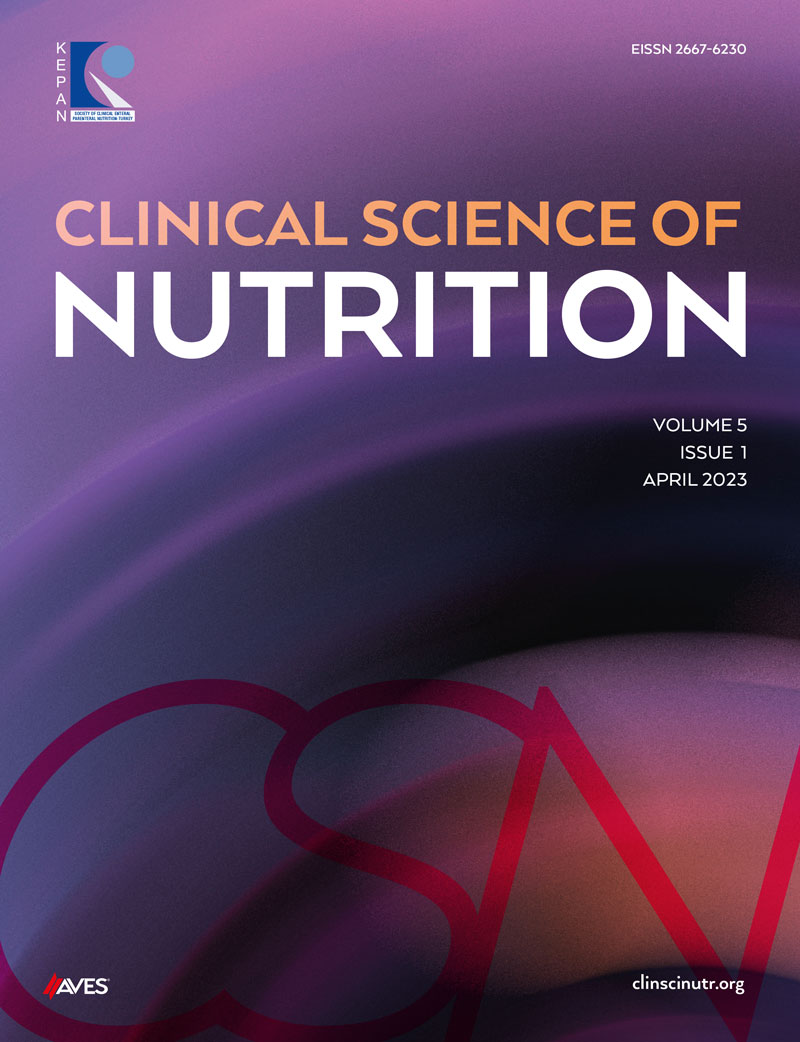Abstract
Objective: The aim of this study was to investigate the general characteristics, management strategies for malnutrition, and clinical outcomes in hospitals according to age groups and examine the relationships between mortality and nutritional way of the patients followed by our nutrition support team.
Methods: Totally, 411 patients were enrolled in this retrospective study. Demographic characteristics, reasons for hospitalization, comorbidities, wards the patients were staying, first day Nutritional Risk Screening 2002 scores, length of hospital stay, and clinical outcomes of the patients were recorded. Clinical parameters were compared between young patients and elders.
Results: The median age was 75 years (18-96) [54.3% male, median length of hospital stay 23 days (0-261), in-hospital mortality rate 43.6%]. The median survival was lower in elders compared to young patients (42 vs. 76 days, P = .002). The median survival was higher in patients with oral feeding compared to those without oral feeding (63 vs. 41 days, P < .001). The median survival was lower in patients with parenteral than oral and/or enteral feeding (14 vs. 48 days, P < .001). Age (hazard ratio: 1.028, 95% CI: 1.010-1.046), sepsis (hazard ratio 4.365, 95% CI: 1.810-10.528), malnutrition in the first day of admission (hazard ratio: 2.223, 95% CI: 1.198-4.126), parenteral nutrition (hazard ratio: 2.458, 95% CI: 1.432-4.220), oral nutrition (hazard ratio: 0.090, 95% CI: 0.045-0.182), tube feeding (hazard ratio: 1.915, 95% CI: 1.015-3.614), and feeding by gastr ostom y/jej unost omy (hazard ratio: 0.113, 95% CI: 0.057-0.224) were found to be independently associated factors for hospital mortality (all parameters had P < .05).
Conclusion: It was shown that the study population had high hospital mortality rate, and age, malnutrition, severe infection, and nutritional ways were independently correlated factors for hospital mortality.
Keywords: Hospitalized patients, malnutrition, mortality, older adults
Copyright and license
Copyright © 2023 The author(s). This is an open-access article under the terms of the Creative Commons Attribution License (CC BY) which permits unrestricted use, distribution, and reproduction in any medium or format, provided the original work is properly cited.










